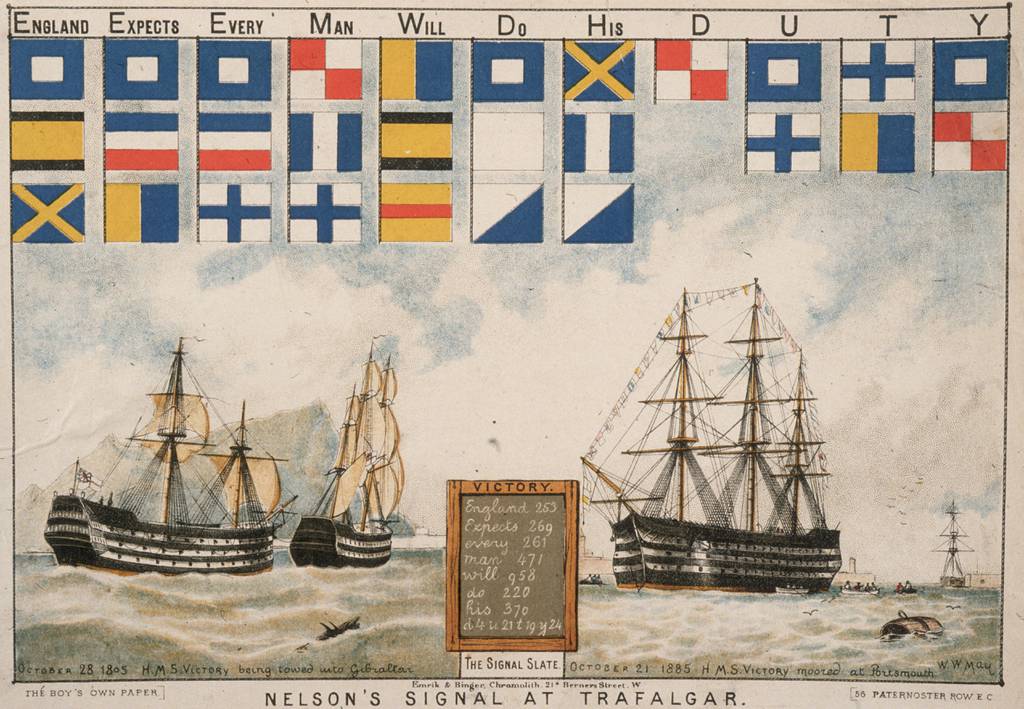In days gone by, people relied primarily on visual signals to convey information over distance. Colored flags called semaphores were used at sea to relay commands and information. In limited circumstances semaphores are still used, such as for emergency communications between ships at sea or ship to shore.
Today, though, most mobile communications rely on radio frequency signals, often enhanced with digital technology. Yet, despite many technology advances, effective communication can be difficult, depending on the environment. Systems need to sense, process and communicate information quickly, accurately, reliably, and securely, even in challenging environments.
The challenge grows with increasing dependence on ever larger volumes of data, often combined with near real time requirements. For the U.S. Department of Defense, this is one key challenge to effective command and control in the denied, degraded, intermittent or limited environments expected at the tactical edge.
Efficient and robust communications are foundational to the DoD’s Joint All-Domain Command and Control initiative. The goal is to ensure effective C2 across all domains and echelons – orchestrating all resources, such as sensors, platforms, and weapon systems, to achieve desired outcomes as quickly and efficiently as possible. Doing so requires maximizing the value of every piece of data communicated, and to as many parts of the C2 network as possible.
Think of this as creating compact data packages, or “edge semaphores†– concise, precise, interoperable, and secure.
Powered by increased compute and analytics available at the edge, to create or interpret these messages, such lightweight communications can enable exchange of mission-critical information across all domains – while reducing overall communications requirements and minimizing the impact of DDIL environments. The result would be more effective distributed C2, with better-informed decisions and faster, more accurate actions by mission stakeholders across echelons.
Purpose-built but problematic
Historically, the DoD developed systems for specific needs. Dedicated sensors feeding a customized tracking system, which in turn services a dedicated mission platform. Single purpose “stove-pipe†systems maximized effectiveness of available technology, but only for a specific application.
However, stove-piped systems don’t interoperate. Data formats from one sensor are most often not understood by others, even though the basic nature – location, track, time – is much the same. We need a far more distributed and agile approach to address the realities of the world today. A single mission may involve multiple military units and coalition partners, each with a varied and changing array of available sensors and systems at any given moment. Mission leaders and teams need to integrate these resources, make decisions and act, sometimes in mere milliseconds, to include operating in DDIL environments.
Current technologies, particularly in storage and compute, present far more capable and versatile options to support a vast range of application requirements. Thus, the solution to lack of interoperability as a critical hurdle to all-domain operations is well within reach. The ability to collaborate and combine resources across multiple systems offers far greater flexibility and mission effectiveness; exactly what JADC2 envisions.
Stovepipes aren’t the only problem. While our networks have grown more robust, our communications have become more verbose. Sensor systems can generate enormous quantities of data. Transmitting all that information for analysis can be slow or unreliable, particularly when operating in DDIL environments.
Standardizing at the edge
Designing with an edge semaphore concept helps solve these challenges. Lightweight protocols with standardized data formats across otherwise disparate sensors and systems enable efficiency and interoperability.
Lightweight protocols can minimize the quantity of data transmitted by leveraging compute and analytics to maximize the value of that data. Just as a single maritime semaphore set can encode a complex message based on prestored information, so could edge semaphores be standardized system messages, indexing richer content, whether calculated or stored locally.
Ensuring interoperability of messages requires a common taxonomy of information types to address how critical characteristics are understood, such as accuracy and precision for track data. Without this, translating information from one system to another risks unacceptable unknown errors in accuracy and precision. Introducing enhanced compute and analytics at the edge, given a common taxonomy, ensures shared data is not only lightweight and efficient, but also understood in context of both the source and the target application, thereby mitigating translation errors.
Localizing compute
A key element of the sense-track-execute process is the analysis that brings together decisions and actions. Localizing compute resources at the mission edge can optimize these analytics and amplify the advantages of lightweight protocols.
New system-on-chip processors integrate multiple system components – CPU, memory, data storage, and specialized software – into a single component. The result is higher performance, lower power consumption, greater reliability, and smaller size – addressing the size, weight, power, and cost (SWaP-C) requirements of the edge.
Today’s enhanced processors can power deeper analytics at the edge, including artificial intelligence (AI). In the past, large datasets had to be transferred from edge devices to centralized datacenters to perform higher analytics. However, a highly centralized capability is not conducive to the dynamic and distributed operational vision of JADC2. Through edge compute, highly enriched information and insights can be used locally and shared with the larger C2 network through lightweight protocols, decreasing response time to threats.
The technology to deploy edge compute and edge semaphores is available today. This approach will enable the DoD to make its C2 networks more interoperable, responsive, and resilient in the dynamic mission environments of today and the future. The result will be more effective joint all-domain distributed command and control, and with it, faster and better informed decision-making to support mission success.
Retired U.S. Navy Rear Adm. Ron Fritzemeier is director of Mission Solutions for Intel, Defense and National Security group.
Have an opinion?
This article is an Op-Ed and the opinions expressed are those of the author. If you would like to respond, or have an editorial of your own you would like to submit, please email C4ISRNET and Federal Times Senior Managing Editor Cary O’Reilly.








